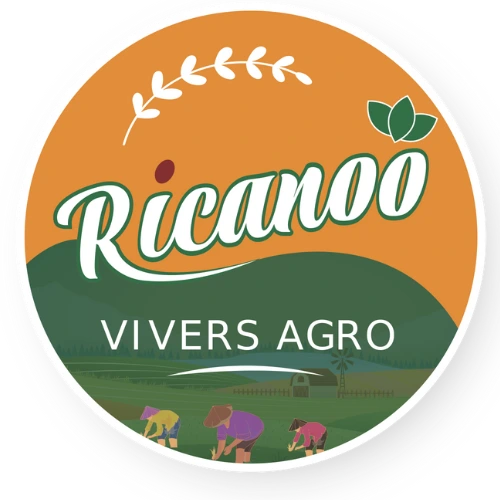Why Dehydrated Foods Are a Game Changer for Your Kitchen and Pantry
If you’ve ever wished your pantry could hold more without overcrowding or wondered how to preserve food’s nutritional value while saving money, the answer could be simpler than you think. Dehydrated foods are steadily gaining popularity for their versatility, longevity, and ability to transform how you store, cook, and eat. This blog explores why dehydrated foods are a truly game-changing addition to any kitchen or pantry. From their health benefits to cooking convenience, let’s uncover the many reasons to consider them for your meals and lifestyle.
The Benefits of Dehydrated Foods
Dehydrated foods aren’t just about lasting longer; they’re about making smarter choices in the kitchen. Removing water content helps preserve food while retaining most of its nutrients and natural flavors. This method offers a range of benefits that make dehydrated foods appealing to health-conscious individuals and practical home cooks alike.
Health in Every Bite
Dehydrated foods maintain many of their original nutrients, making them a healthier option than overly processed or heavily canned alternatives. Because dehydration often avoids using preservatives, you can enjoy your ingredients in their purest forms. Whether it’s organic apple slices or fresh spinach, these foods are rich in vitamins and minerals without added sugars or chemicals.
Extended Shelf Life Means Less Waste
One of the standout benefits of dehydrated foods is their extended longevity. Because the moisture is removed, the chance of spoiling is significantly reduced. This makes it easy to reduce food waste, especially for fruits, vegetables, meats, and herbs that typically spoil faster. Imagine turning fresh herbs like basil into dried flakes or saving a bumper crop of strawberries as dried fruit to enjoy months later.
Saving Costs Without Compromise
Dehydrating foods allows for bulk-buying during sales or peak seasons without the worry of food spoilage. You’ll also avoid constantly repurchasing perishable items, helping cut down on grocery expenses in the long run. Bonus points if you do your own DIY dehydration at home, making it even more budget-friendly.
Versatility in Cooking with Dehydrated Ingredients
Dehydrated foods open a world of possibilities for culinary creativity. These pantry staples can easily fit into your everyday meals or be used as secret ingredients to elevate flavors.
Convenience in Everyday Recipes
Dehydrated vegetables, like tomatoes or carrots, can be rehydrated quickly for soups, stews, or casseroles. They fit seamlessly into weekly meal plans, adding both nutrition and convenience.
Burst of Flavor
Certain dehydrated foods can pack an intense flavor punch. Sun-dried tomatoes, for example, give dishes a tangy and robust twist, while dehydrated mushrooms can add deep umami flavor to broths and sauces. Looking for inspiration? Try incorporating dehydrated ingredients into a sun-dried tomato pesto or a flavorful mushroom powder as an umami booster.
Portable and Lightweight
For those who love outdoor adventures or quick grab-and-go meals, dehydrated foods are a lifesaver. Snack on dried fruit during a hike, or pack a spoonful of dehydrated vegetable soup mix for a warm, satisfying meal by the campfire.
Saving Space and Staying Organized
Keeping your kitchen and pantry neat can be challenging, especially with limited storage space. Dehydrated foods offer an ideal solution for minimalists and anyone looking to streamline their pantry.
Compact Storage
Without their water weight, dehydrated foods take up significantly less room compared to their fresh or frozen counterparts. A small jar of dried spinach can equal an entire bunch of fresh spinach when rehydrated. This is particularly valuable for those living in apartments or homes with smaller pantries.
Easy Labeling and Categorizing
With proper labeling, storing dehydrated foods becomes a breeze. Whether you’re using jars, vacuum-sealed bags, or stackable containers, properly organized dehydrated goods make mealtime decision-making simple and stress-free.
DIY Dehydration at Home
While plenty of dehydrated foods are readily available for purchase, making your own at home is surprisingly simple and rewarding. It not only gives you control over the ingredients but also lets you experiment with different flavors and combinations.
Getting Started
To dehydrate foods, you’ll need basic equipment like a food dehydrator, your oven set to low, or even just sunlight for certain types of food like herbs. Start with easy options like apple slices, zucchini, or herbs to get a feel for the process.
Preparing Foods for Dehydration
Wash, peel, and slice your fruits and vegetables evenly to ensure they dry out consistently. Season them with your favorite spices for added flavor if you like, or leave them plain to maintain their natural taste.
Store and Enjoy
Once dried, store your foods in airtight containers in a cool, dark place. And don’t forget to test out your creations in recipes like fruit leather snacks or a hearty dehydrated vegetable soup mix.
Explore the Possibilities
Dehydrated foods bring together the best of all worlds. They save time, money, space, and effort while making pantry organization easier than ever. Whether you’re rehydrating sun-dried tomatoes for a fresh pesto, sprinkling mushroom powder into savory dishes, or snacking on homemade fruit leather, there’s no denying that dehydrated foods are a game changer.
Curious to try incorporating dehydrated foods into your lifestyle? Explore our favorite recipes like a sun-dried tomato pesto or dehydrated vegetable soup mix to get started. The possibilities are as endless as the shelf life of your new pantry staples.




